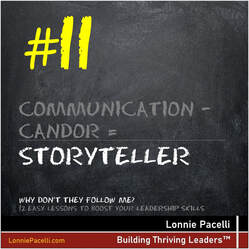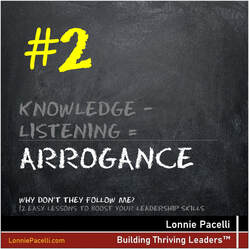About a week later, the young man came into the store. “Excuse me, sir,” Jose said as he greeted the man. “We were reviewing some of our security footage and saw you stuff a ribeye into your backpack and leave without paying for it. We thought that, rather than get the authorities involved, we’d ask you about it. So if you’ll just pay for it, we’ll be good.”
The young man, unfazed, replied, “Well, I ate the ribeye and it’s gone, so why should I pay for it?” He abruptly left the store. Jose just stood there, at a loss for words at the twisted logic.
*** *** ***
You may be looking at this scenario wondering how the young man could possibly feel that he shouldn’t pay for the ribeye just because it no longer exists. He brought it home, prepared it, and enjoyed it. Jose and Linda lost money because of the young man’s actions. And to add insult to injury, the young man felt absolutely no remorse for stealing the ribeye. Sounds crazy, huh?
Yet, it’s precisely this logic, the ribeye alibi, people have used when I’ve caught them plagiarizing my articles. Dictionary.com defines plagiarism as “an act or instance of using or closely imitating the language and thoughts of another author without authorization and the representation of that author's work as one's own, as by not crediting the original author.” According to Grammarly.com, there are seven common types of plagiarism:
I wrote my first book, The Project Management Advisor, in 2004. Since then, I have written more than 50 books and more than 400 articles. Periodically, I run my articles through a plagiarism checker to see where else they show up and if I have been given proper attribution. Many times, someone will repost one of my articles and give me proper attribution. Provided proper attribution is given, I am completely cool with my article being reposted. But there are times when someone will either completely plagiarize my content or paraphrase it with no attribution whatsoever. Finding plagiarized content is one thing; getting action is a horse of a different color. I’ve experienced everything from having the content removed by the platform, to being reimbursed by the plagiarist, to having the plagiarist make a donation to my favorite charity, to being ignored, to hearing the ribeye alibi. Two instances of the ribeye alibi went as follows:
From a legal perspective, they worked, at least in their own interpretation, within the boundaries of the law. From an ethical perspective, they abandoned any sense of doing the right thing by claiming the ribeye alibi. They posted my content under their name (the shoplifter stole the ribeye), enjoyed the use of my content (the shoplifter ate the ribeye), then when they were caught (the shoplifter was recorded stealing the ribeye on camera), they claimed that because they took it down they weren’t required to do anything else (the shoplifter said he wasn’t in the wrong because the ribeye no longer existed). In this analogy, most rational-thinking people would say the owners of the grocery store deserve to be compensated for the stolen ribeye. So why shouldn’t I as the victim of plagiarism deserve to be compensated for the unauthorized and improperly cited use of my content? My intent is to dig deeper into the ribeye alibi and give you some practical nuggets on how to discover if you’ve been plagiarized and how to address plagiarism matters. I will also tell you five real-life stories about my being a victim of plagiarism. I will not be divulging entity names; they will only be known as RibCo, RightThingCo, Coward, RibGuy, and SorryDude. My experience and focus are on articles, blog posts, and other written content available on the Internet; I am not focused on other digital assets like music and pictures. Also, please keep in mind that I am presenting this from a business and ethical perspective and giving you some ideas to consider. You should consult with an intellectual property attorney before taking action on your own. See more about RibCo, RightThingCo, Coward, RibGuy, and SorryDude, and how you can fight plagiarism in The Ribeye Alibi: What I Learned as a Victim of Plagiarism.
0 Comments
 Since my first book in 2004, I have written more than 50 books and 400 articles on topics such as project management, leadership development, work/life balance, and raising a child on the autism spectrum. My earlier attempts at writing articles were a jumbled mess and required hours of refining thoughts after my editor had given me constructive feedback. I’ve spent a lot of time figuring out how to write both more effectively and efficiently. If you’re interested in writing articles, my singular goal is to help you produce topical content that’s relevant, helpful and entertaining for your readers. Read more at ProjectManagement.com.  A long-time friend (who I’ll call “Stu”) loves talking about finances. Stu is very active in the stock market and spends hours researching exchange traded funds. He is also very big on maximizing rewards points and signing bonuses with credit cards. Stu is not at all in debt (that I know of); he is just really big on accumulating wealth. Admittedly, I share some of Stu’s zeal. I too am active in the stock market and use credit cards for specific purposes to maximize cash-back rewards. Aside from saving money, it’s a fun game to see the great deals I can get. Where Stu and I differ, though, is in what we are willing to sacrifice for our wealth accumulation journey. I enjoy comfort and convenience, and value my personal time and generally will not sacrifice much in those areas to save a dollar. I believe in sound fiscal management, but not at the expense of comfort, convenience, or impacts to my time. Stu, on the other hand, is much more willing to sacrifice comfort, convenience, or personal time if it means more money in his pocket. It’s needled at me for years, particularly when Stu tries to project his values about finances on others and criticize those who are less willing to make the sacrifices he makes. In a recent discussion, I confronted him on his views on finances. Needless to say, the discussion didn’t go particularly well. I can also say I was wrong in confronting him. Read more at ProjectManagment.com.  E.F. Hutton was a financial brokerage firm founded in 1904 by brothers Edward Francis and Frankly Laws Hutton. In the 1970s, E.F. Hutton created an advertising campaign with the slogan, “When E.F. Hutton talks, people listen.” The slogan implied that E.F. Hutton didn’t mince words, and that any advice given was valuable. For me, it ranks right up there with “Two all-beef patties…” and “Plop plop, fizz fizz…” Now that I’ve planted a couple of commercial jingles in your head that you may be singing the rest of the day, let’s get into how this is relevant to being a great project manager. In my early days as a consultant, I mistakenly believed that my job was to tell, that the client was expecting me to talk on any topic and espouse my wisdom. As a result, I tended to use a lot of words to communicate what I thought needed to be communicated. As I grew, I noticed those who were particularly impactful at getting their point across. They didn’t simply fill the air with words; it was quite the opposite. They sat back and listened while others did the talking, then, when ready to speak, came into the conversation with a profound question or statement that caused others to think. What they said was concise, relevant and thought-provoking. I also noticed something else--whenever that person spoke, others generally stopped talking to yield the floor. People like that make their words count. They have what I call a high value per word. Read more at ProjectManagement.com.  As of this article, my wife and I are in process of buying a car. We are looking for a very specific model with “must-have” features, like exterior color and interior appointments. At one dealer in particular, the salesperson was clearly trying to endear himself to me, wanting to talk about things that I wouldn’t generally talk about with someone I just met—and had nothing to do with buying a car. Now, I’m a relational guy and love to learn more about people—but I can also tell when someone is manipulating me. His dis-ingenuousness made me not want to work with him. I was looking to buy a car and wanted to stay focused on what needed to be done to buy the car, but the salesperson was trying to work me. I ended up walking away and will avoid doing business with the salesperson in the future. You might be asking what buying a car has to do with being a project manager. So much of what a project manager does is about relationships—guiding and working with others to deliver something on time, on budget, and within scope. However, relationships aren’t one size fits all. Depending on the situation and the parties involved, I’ve found that relationships can take on one of three forms, as follows: Read more at ProjectManagement.com. Micromanage: to manage or control with excessive attention to minor details Source: dictionary.com  I’ve been a micromanager, been micromanaged, and advised clients on how to avoid micromanaging and being micromanaged. To help peel back the onion on micromanagement and what to do about it, I’d like to start with a concept in my book, Straight A’s, that empowers followers. The Straight A’s focus on five core steps, as follows:
For this to work, both the leader and the follower have to do their parts in each step of the process. For each of the steps, here are responsibilities for both leaders and followers: Read more at ProjectManagement.com.  Feedback is a huge part of what I do in my daily life. I give feedback in my role as a consultant to help my client do something better or avoid something bad. Early in my career, I began learning about right and wrong ways to provide feedback. Sometimes I did it okay, other times I really booted it. As a professional, spouse, parent and now grandparent, I’m still learning about how to provide feedback—when to give it, and when to keep my mouth shut. I adopted the mantra, “My job is to tell you what I think; yours is to decide what to do with it.” It gives me freedom to constructively speak my mind, while acknowledging the recipient may or may not use what I told them. When I started writing, I got a better appreciation for the “yours is to decide what to do with it” part of the mantra. I get feedback from you as ProjectManagement.com readers, from book reviewers, and from my editor (who is also my wife). Patty edits virtually everything I write and does an outstanding job of making my work better. Through my career as an author, I had to learn how to be a graceful recipient of feedback—and constructively decide what to do with it. Regardless of how painful the feedback was to hear, I had to recognize it was for my own good. There are four paths a feedback recipient could take: Read more at ProjectManagement.com  In my four decades as a professional, I’ve delivered many presentations and keynotes. Some went well, others totally bombed. Through my learnings about both the good and bad, I’ve identified key success factors necessary to create and deliver compelling presentations. The factors, which I call the “4 C’s of Compelling Presentations,” have helped me more effectively get my point across. Let’s dig right in… See more at ProjectManagement.com
Unless you excused yourself for whatever reason you were there for at least fifteen minutes listening to his philosophy. The problem was that Moe was friends with the person managing our contract so we had to put up with him.
 Recently, my wife and I were on a social visit with a friend I’ll call Vick. We were enjoying beverages and light chatter when suddenly the topic changed to world events. It was like a light switch turned on, with Vick becoming very animated about the topic, spewing data point after data point, and aggressively quizzing me on whether I had heard about some of the points he was raising. When I replied “no,” his response was incredulous. “You mean you haven’t heard of _____?” he asked, as if I were the only person on Earth who didn’t know what he was talking about. This went on for about an hour before we resumed talking about lighter topics. I thought about the interaction that evening, and the next day texted him a follow-up question. The onslaught resumed, and after a while I decided to disengage because I saw that no good would come of the exchange. I later thought about both the face-to-face and the text interactions, and came up with some important elements that were there—and some that were missing: Read more at ProjectManagement.com |
Topics
All
Reprints
Contact Lonnie about article reprints. Please specify article you wish to reprint. Backlist
See Lonnie's Amazon Author Page Archives
July 2024
|
Lonnie Pacelli - Building Thriving Leaders™
Insightful | Creative | Direct Advice to Help Leaders Help Themselves
Keynote Speaker | Board Director | Autism Advocate | Author | Project Management Expert | Microsoft/Accenture Veteran
See his books on Amazon
Insightful | Creative | Direct Advice to Help Leaders Help Themselves
Keynote Speaker | Board Director | Autism Advocate | Author | Project Management Expert | Microsoft/Accenture Veteran
See his books on Amazon
Services |
About
|
© COPYRIGHT 2019. ALL RIGHTS RESERVED.
We are a participant in the Amazon Services LLC Associates Program, an affiliate advertising program designed to provide a means for us to earn fees by linking to Amazon.com and affiliated sites.
|


 RSS Feed
RSS Feed